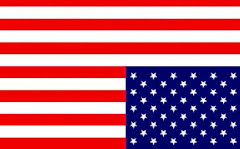O's middle-class squeeze
March 17, 2010
The president has spent the closing days of the health-care debate making his case to the segments of Americans who will benefit under ObamaCare. But lots of other people will be squeezed under the scheme -- and not the rich folks that President Obama singles out in his stump speeches, but families who are decidedly middle class.
Health reform will leave many of them newly priced out of a transformed market for health insurance.
The hardest hit won't be those earning more than $250,000 a year -- the group that he says needs to "pay their fair share." Rather, it's families whose combined annual income is around $100,000 who could be crushed under this plan.
These folks will be too "rich" to qualify for ObamaCare's subsidies, but probably too poor to easily afford the pricey insurance that the president's plan forces them to buy.
Many of these $100K families will be obliged to buy a policy costing an average of $14,700 for the mid-level, "silver" health plan, according to the Congressional Budget Office's estimates. After income taxes, they'll be spending almost a quarter of their net income for health insurance.
How can these families make out so badly under ObamaCare? The plan does two things to refashion the market for health insurance and inadvertently stacks it against these middle-class earners.
First, it limits most consumers to choosing only one of three basic health plans. (These will offer the same basic package of health benefits -- the main difference is that the higher-premium plan has lower co-pays, while the lower-premium one has higher co-payments.) And even the cheapest option -- the "bronze" plan -- will start at about $12,500 for a family, says the CBO.
People buying insurance outside the workplace won't be able to shop around to find cheaper options: ObamaCare effectively outlaws that, because the president wants everyone to have the same package of generous benefits. It's a noble ideal -- but it forces people to buy coverage that may be pricier than what they need, want or can afford.
The individual-insurance market -- which now lets you go to "ehealth.com" and buy a policy directly from Aetna or Wellpoint -- will shut down almost immediately: The regulations ObamaCare puts on the private individual-policy market will simply leave it unable to compete with the new state-based insurance exchanges that the reform creates.
Next, ObamaCare creates powerful financial incentives for employers to drop coverage -- paying a small fee to "dump" employees on the exchange. Because of the new subsidies, the savings -- to the employer and most employees -- will be substantial.
The financial incentives for employers to move workers into the exchanges are most powerful when it comes to middle-income wage earners. Here's an example:
To buy that mid-level, "silver" health plan, the tax code effectively subsidizes a family earning $42,000 a year to the tune of about $5,500 for employer-provided coverage. But in the exchange, they'd get a direct government subsidy in 2016 of $12,100. The exchange is clearly a better deal.
But, again, the subsidies phase out, so that a family earning around $100,000 loses out: Because they won't get insurance through work, they'll lose the tax-code subsidy for insurance -- but they'll get no subsidy to buy the mandated expensive policy.
Yes, $100,000 a year allows a nice living in most of America (if not Manhattan). But it's the income of a real-estate broker married to a limo driver -- not of the affluent folks that the president has said will bear the brunt of any financial burdens from reform. Many of these middle-class families will probably opt to pay the federal fine, and go without health insurance until they get sick.
Scott Gottlieb is a physician and resident fellow at the American Enterprise Institute. He is partner with a firm that invests in health- care companies.























 An election for President and Commander in Chief of the Military must strive to be above reproach. Our public institutions must give the public confidence that a presidential candidate has complied with the election process that is prescribed by our Constitution and laws. It is only after a presidential candidate satisfies the rules of such a process that he/she can expect members of the public, regardless of their party affiliations, to give him/her the respect that the Office of President so much deserves.
An election for President and Commander in Chief of the Military must strive to be above reproach. Our public institutions must give the public confidence that a presidential candidate has complied with the election process that is prescribed by our Constitution and laws. It is only after a presidential candidate satisfies the rules of such a process that he/she can expect members of the public, regardless of their party affiliations, to give him/her the respect that the Office of President so much deserves.

No comments:
Post a Comment
Note: Only a member of this blog may post a comment.